I was a hospital in-patient recently and fortunately ended up at one of the best hospitals in the world, St Thomas’ in Lambeth (or ‘Tommy’s’ as us alumni call it) where the standard of care was outstanding. I’m pleased to say I’m fine now, thank you for asking.
One of the most extraordinary features of the place is the view from some of the wards. Here’s what I could see if I just stepped out of bed …
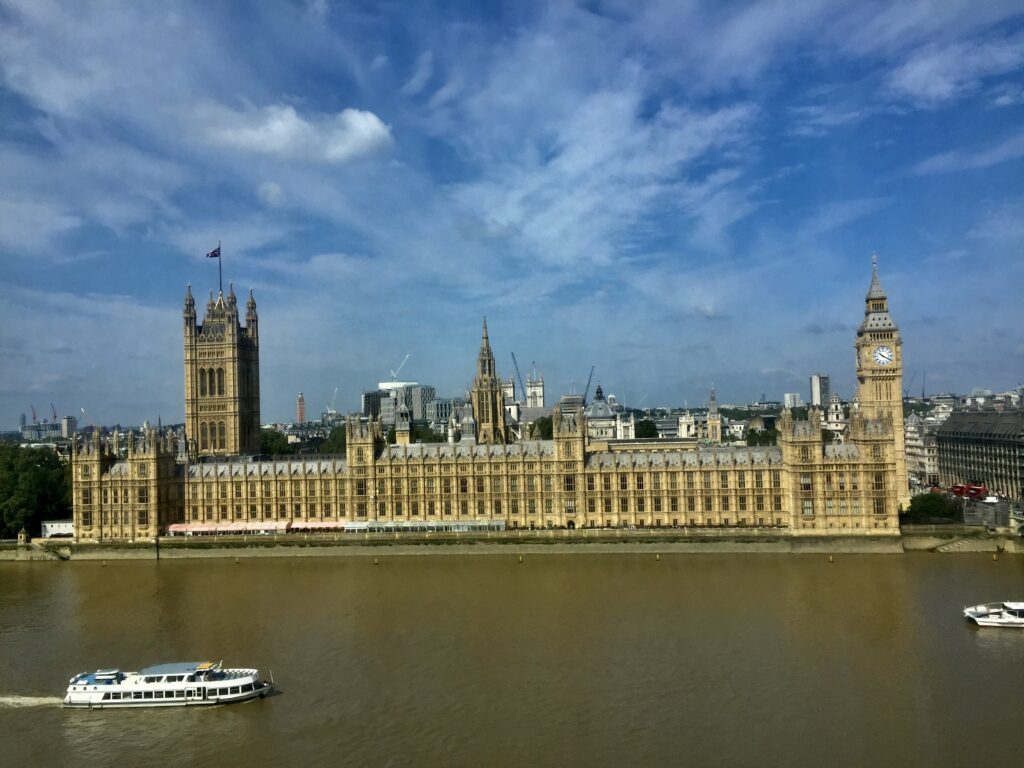
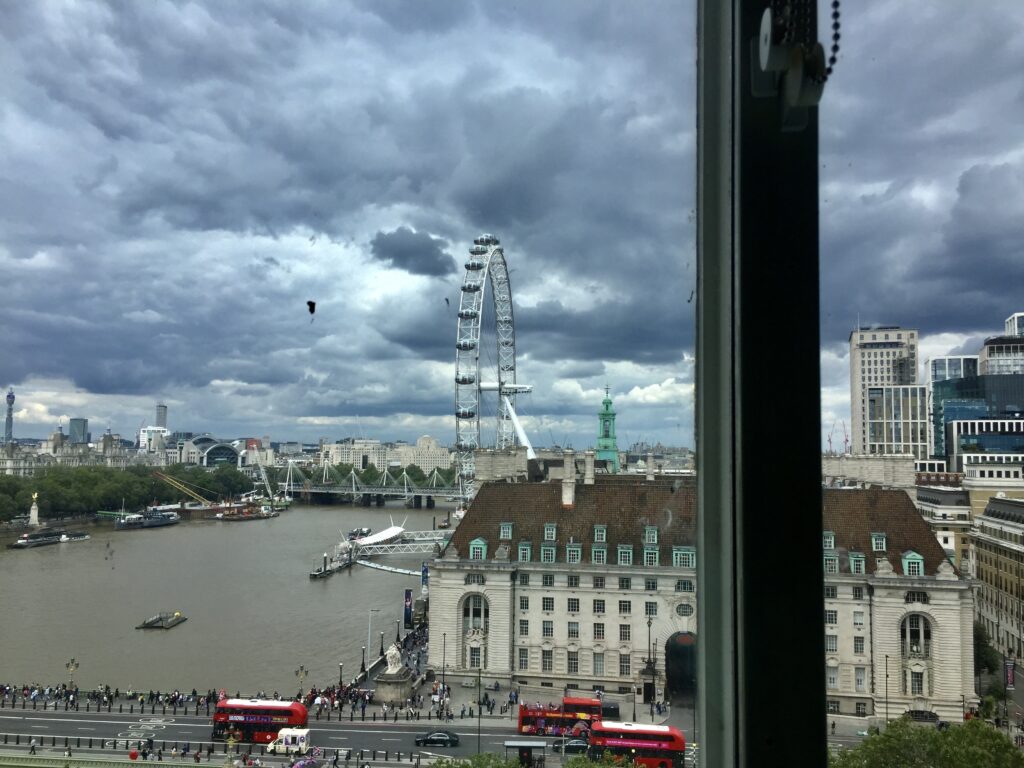
When I went back last week for a follow-up appointment I did a bit of exploration and was astonished and delighted at what I found.
I headed for the oldest part of the hospital and on my way, in the South Wing corridor, I came across these lovely tiles …
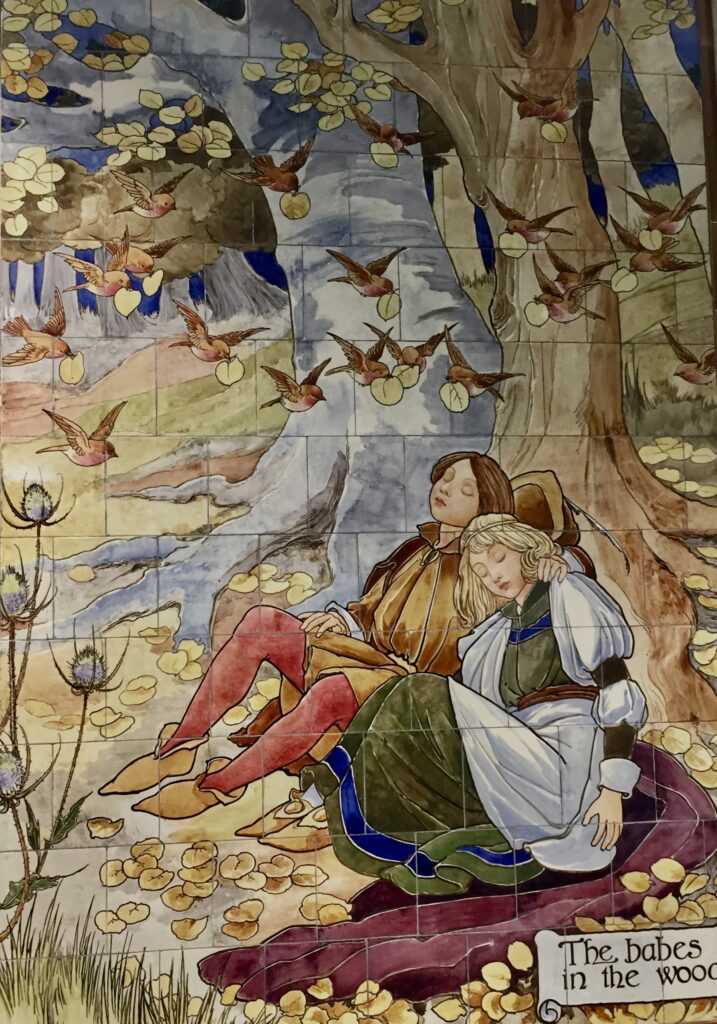
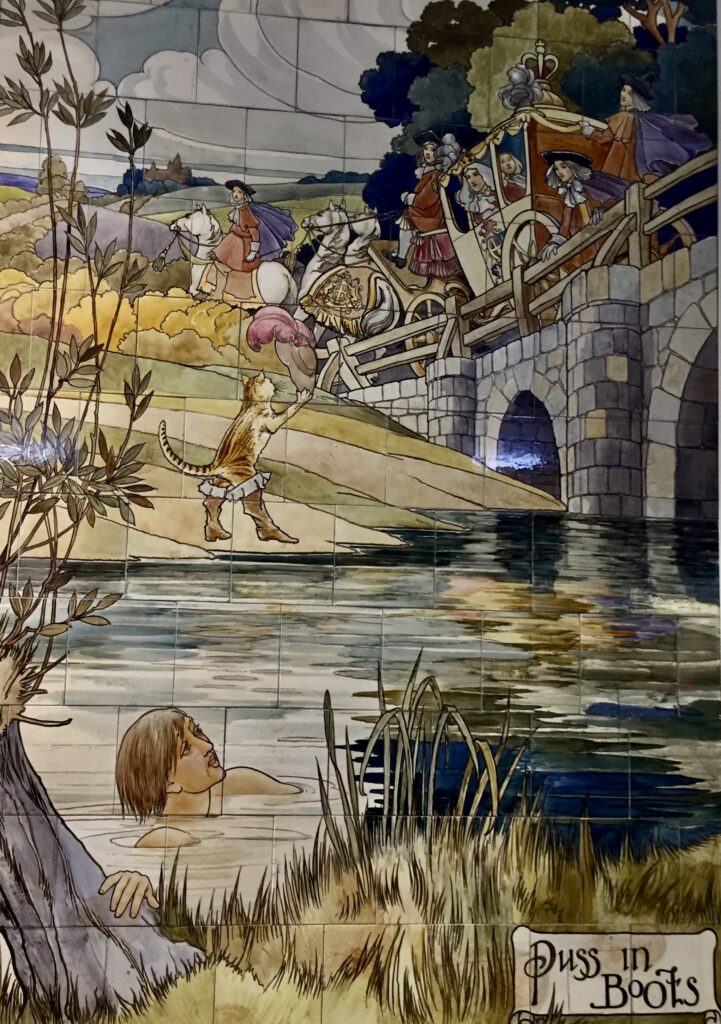
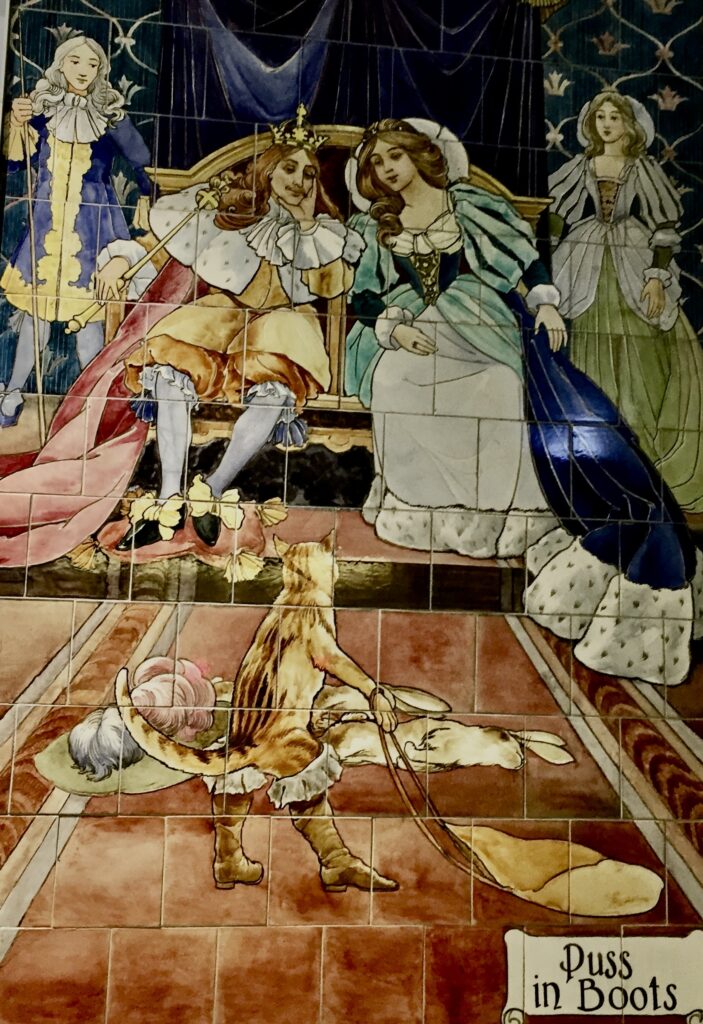
Created by the Royal Doulton Lambeth factory, they and others originally covered the walls of two of St Thomas’ childrens wards, Lilian and Seymour, which were opened in 1901 and 1903 respectively. Hygiene was a factor in the tiling decision but also, of course, the aim to give pleasure and amusement to the young patients. Here they are illustrated on two postcards …
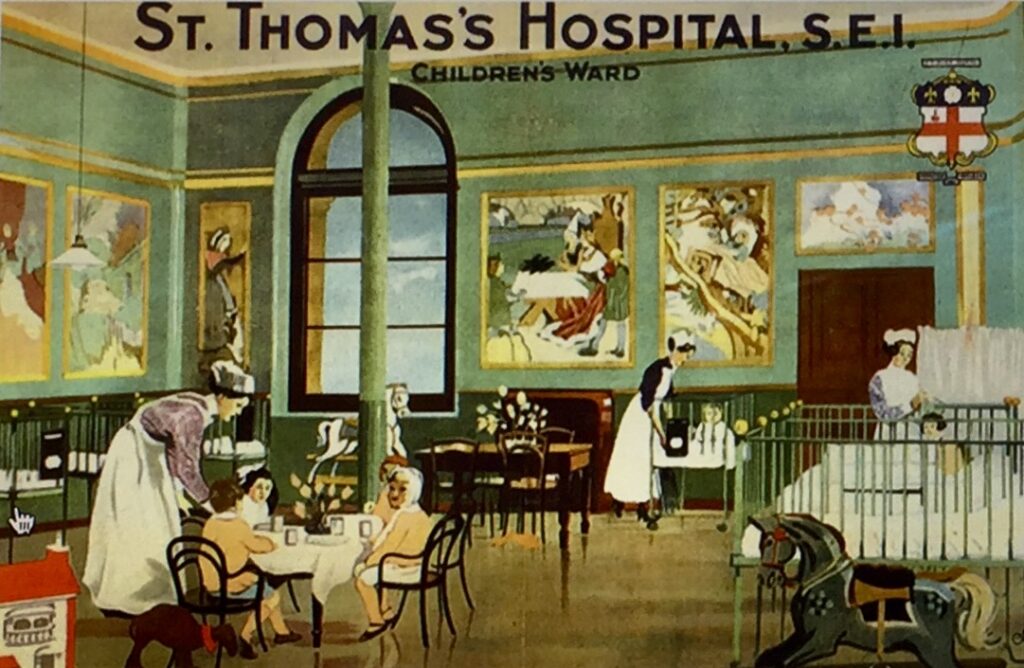
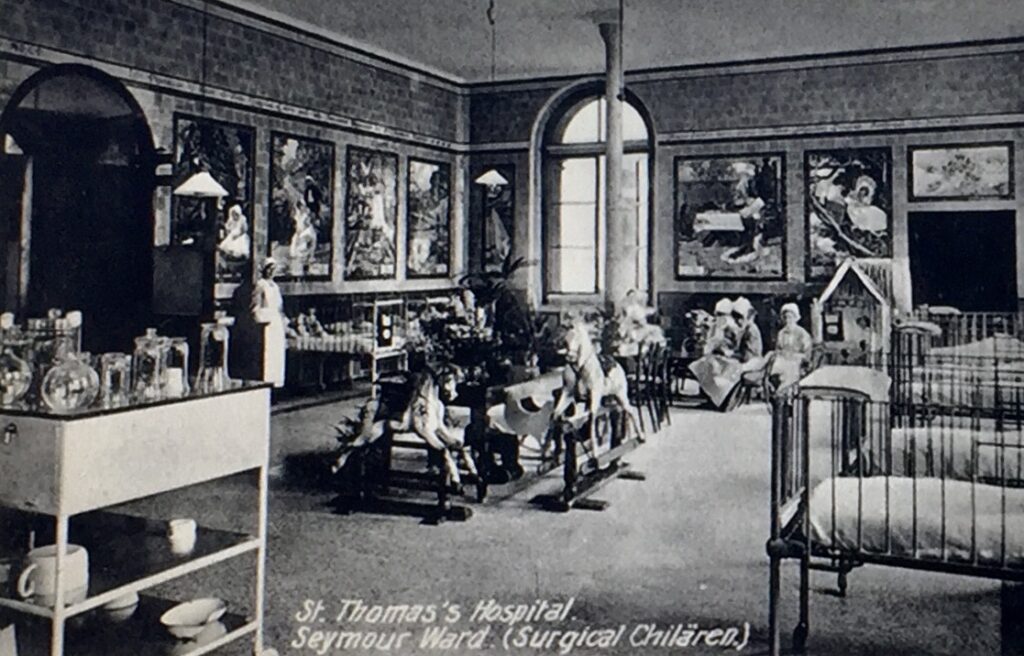
In the Great Hall are commemorated important people who had a connection with the hospital …

And they’re not all men …
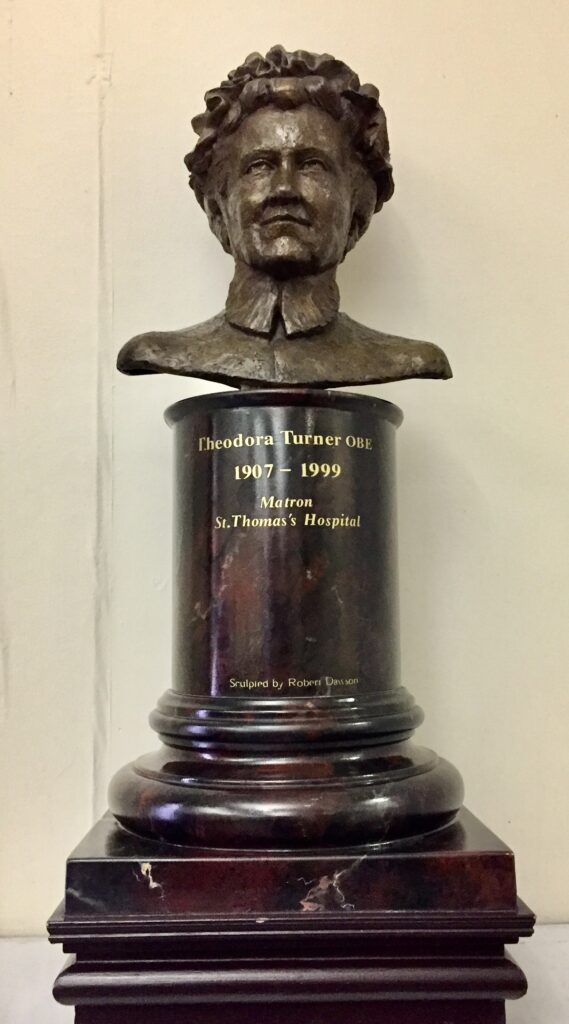
From her Guardian obituary :
She saw her 10 years as matron of St Thomas’s and superintendent of the Nightingale training school from 1955-65 as a time of great social change and was eager to relax the strict rules which she believed had governed nurses’ lives for too long. Encounters with Theodora Turner were seldom forgotten … Former students and nursing colleagues remember her sense of duty and discipline, her kindness and humour. The latter is, perhaps, most neatly encapsulated in her belief that her pet mynah bird, presented to her by sailors when working at Liverpool Royal Infirmary, was a foolproof burglar alarm because of its ability to mimic her laugh.
No prizes for guessing who this lady is …
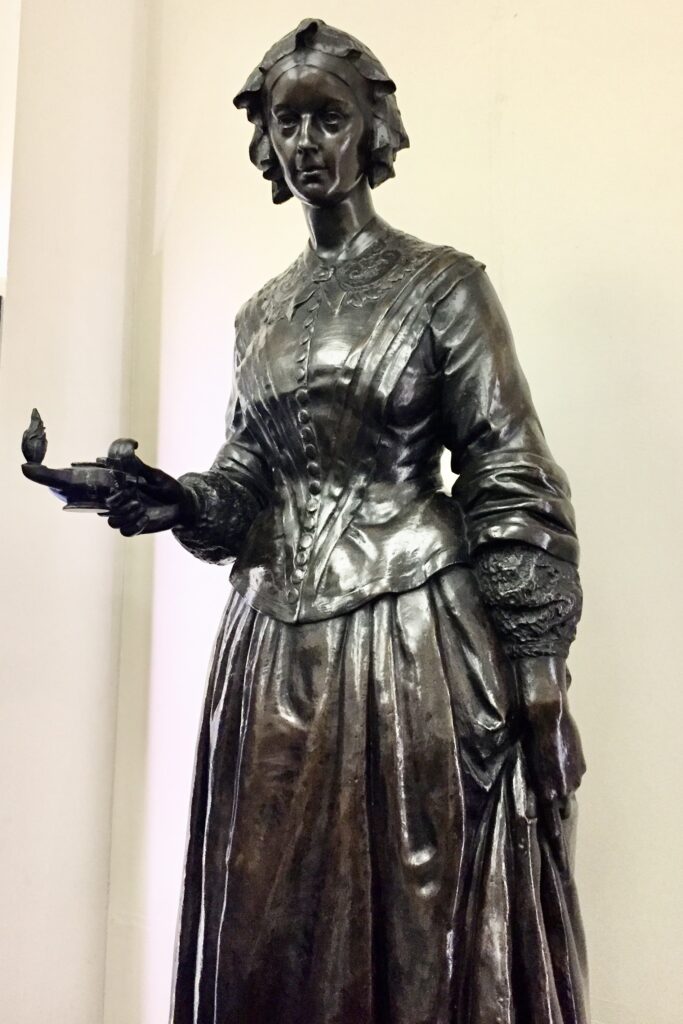
Florence Nightingale greatly influenced the design of the new 1872 St Thomas’ Hospital with its innovative ‘pavilion style’ of seven large separate buildings connected by walkways. She recognized the importance of design for improving hygiene and health, and made careful calculations regarding dimensions and efficient use of space in hospitals. Nightingale proposed full-height windows at specified intervals in the wards, with the beds set between to encourage ventilation and allow air to circulate without creating drafts. She stipulated that clean and dirty areas should be separate so food and clean linen were stored at the ward entry with washing and sanitary facilities at the other end.
I saw this entrance and had to go and nose around …
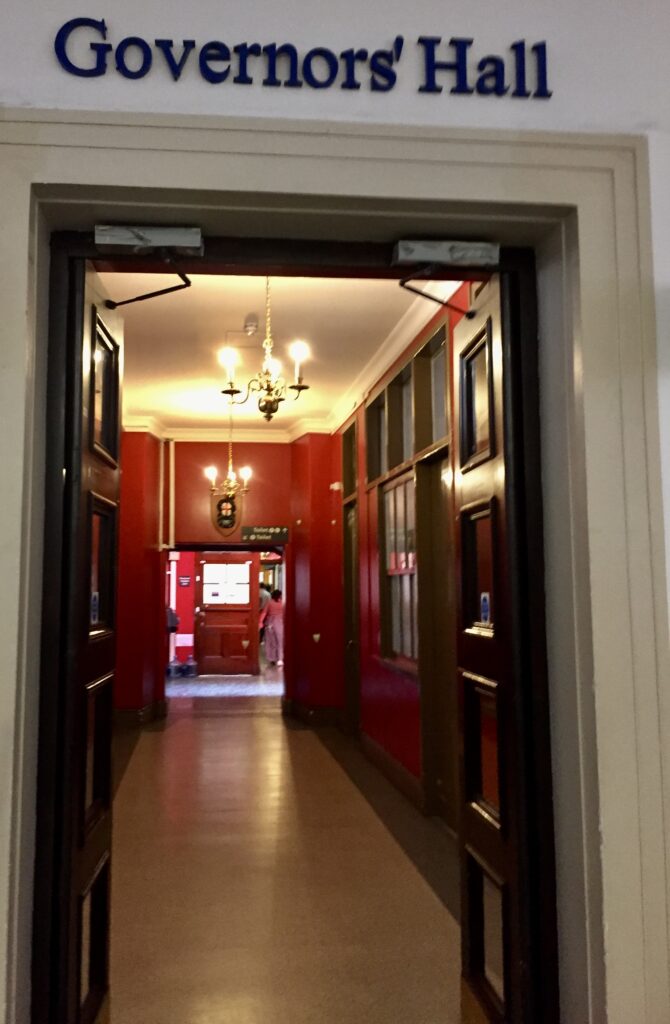
Up the impressive staircase, which I presume dates from the 1870s …
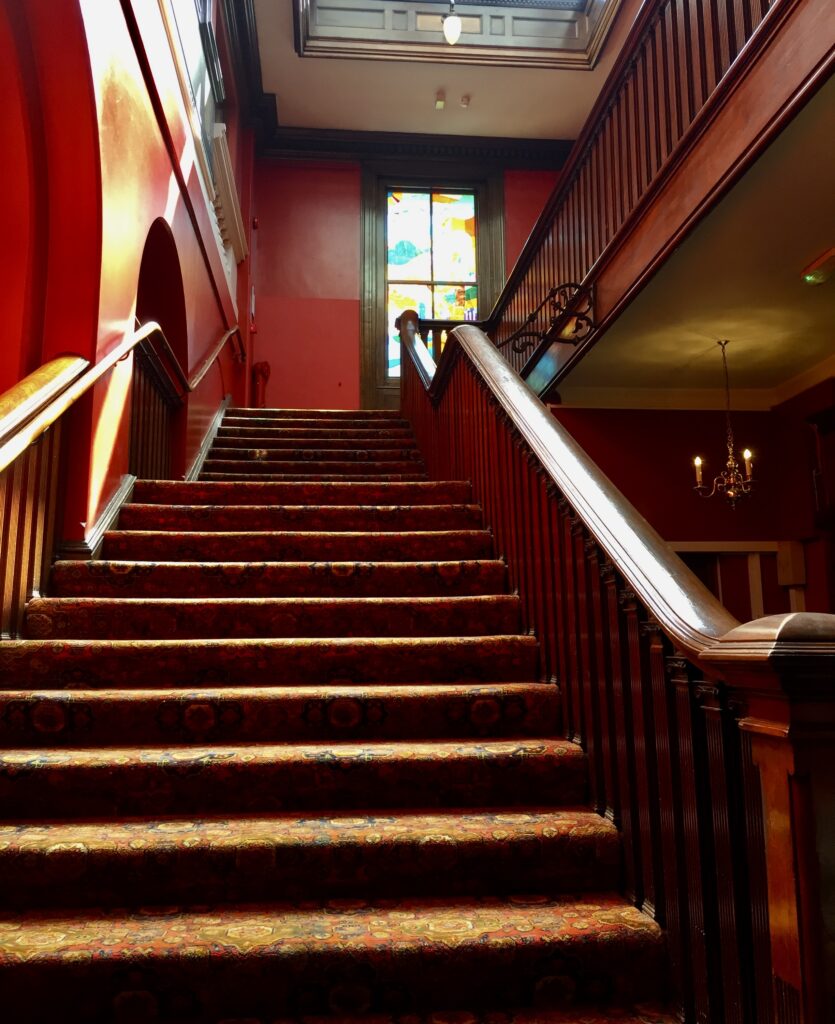
A modern stained glass treat at the top …
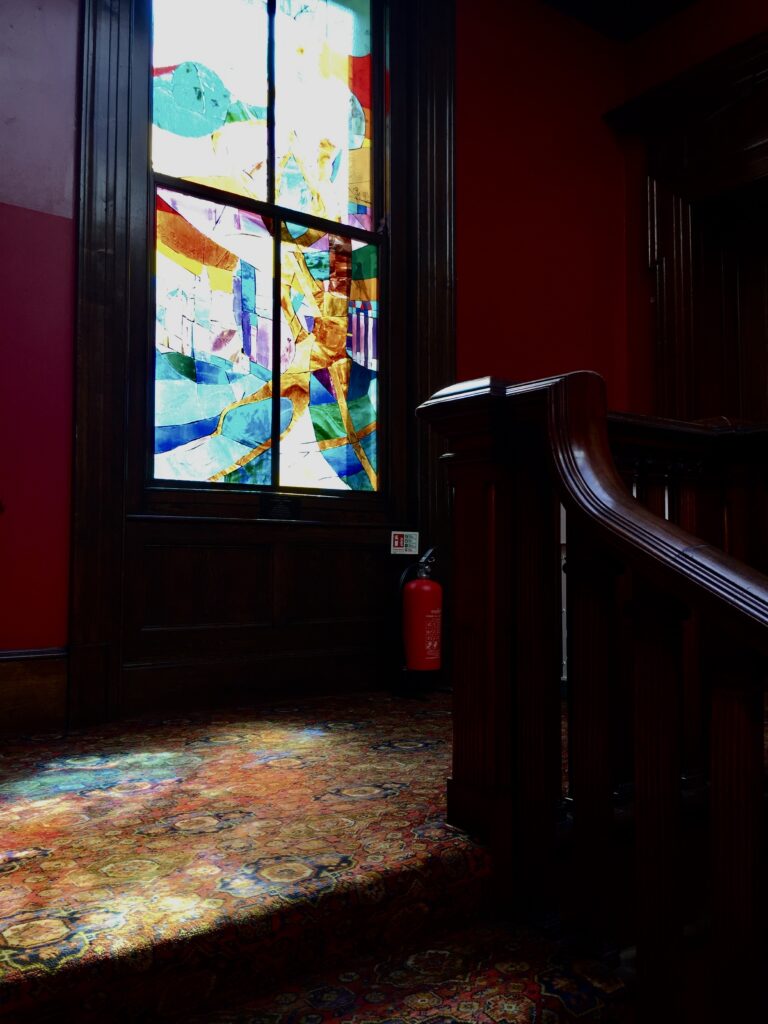
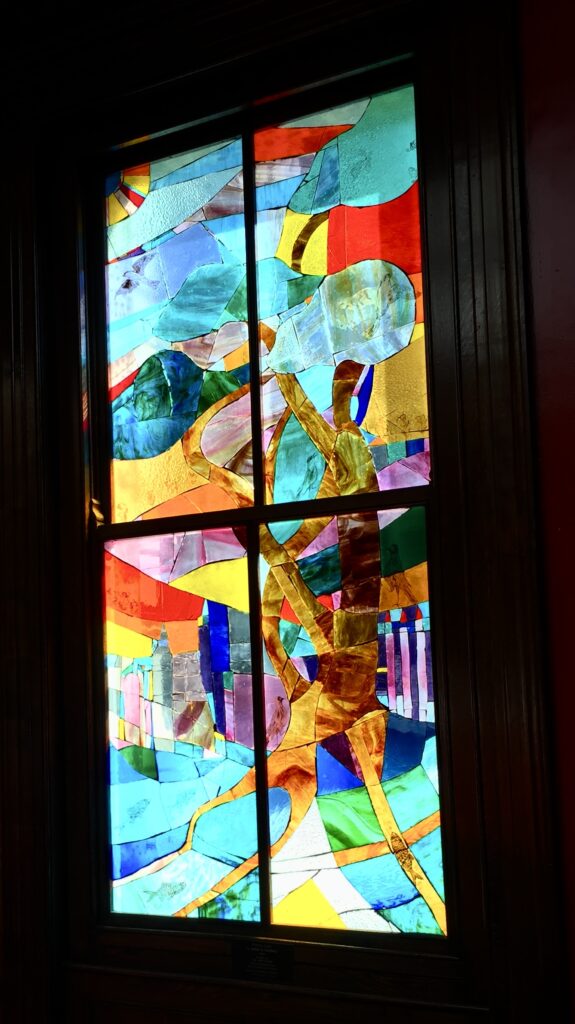
I peeped into the dining room …
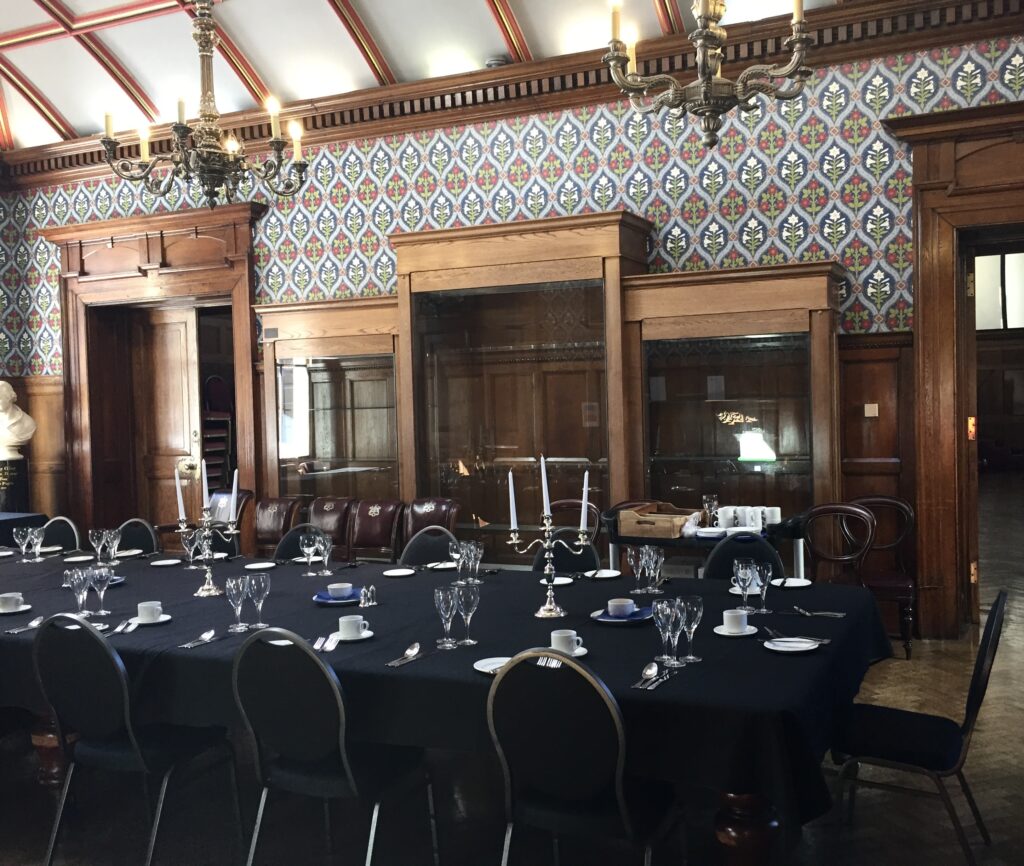
Above the staircase …
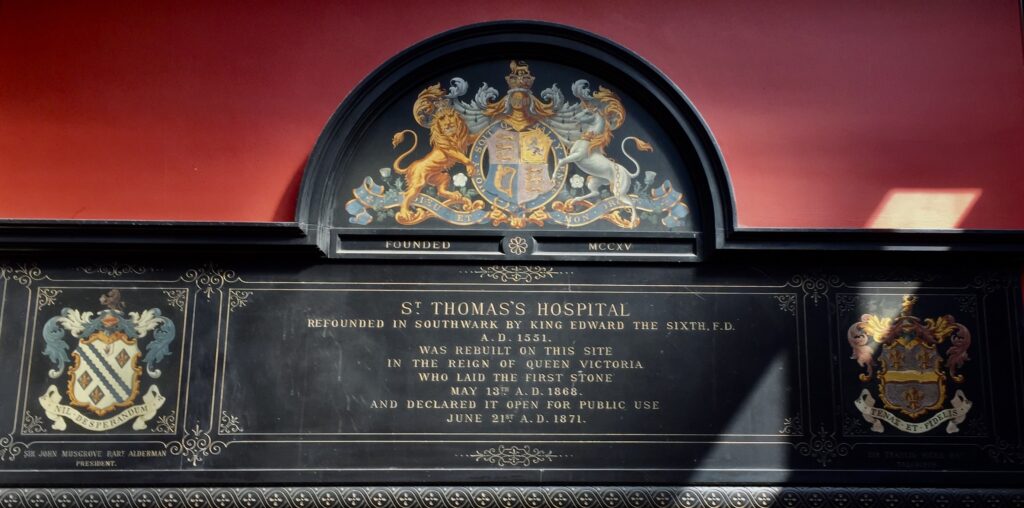
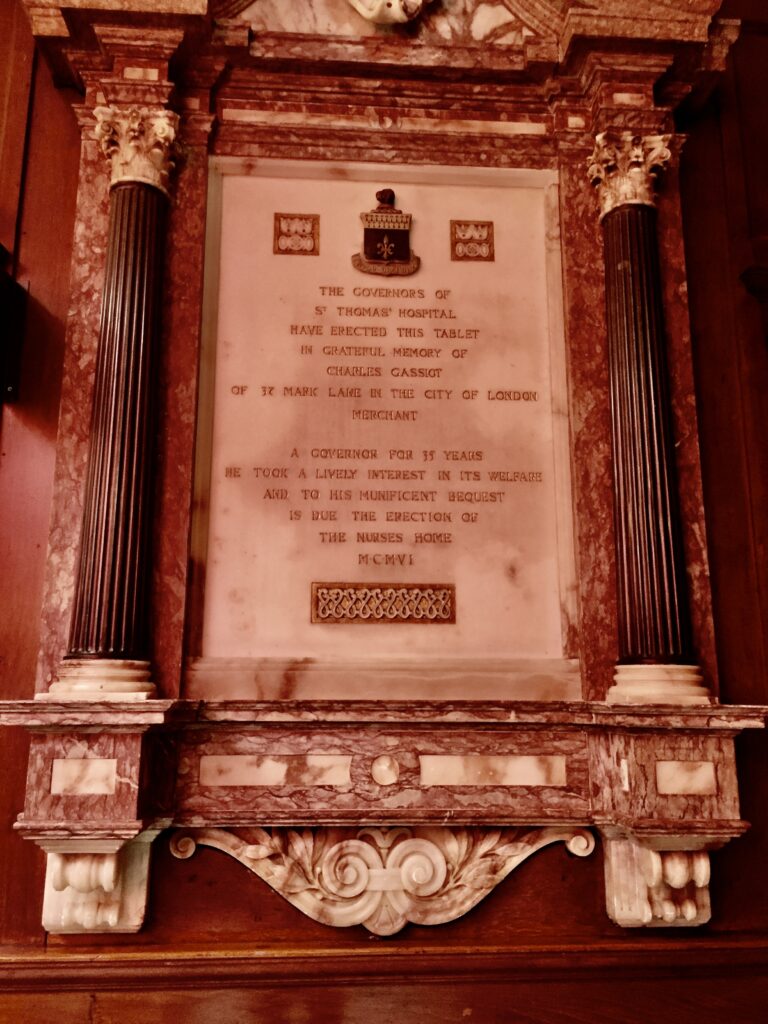
The Duke of Connaught (1850-1942) …

He was president from 1882 to 1932.
Back on the ground floor …
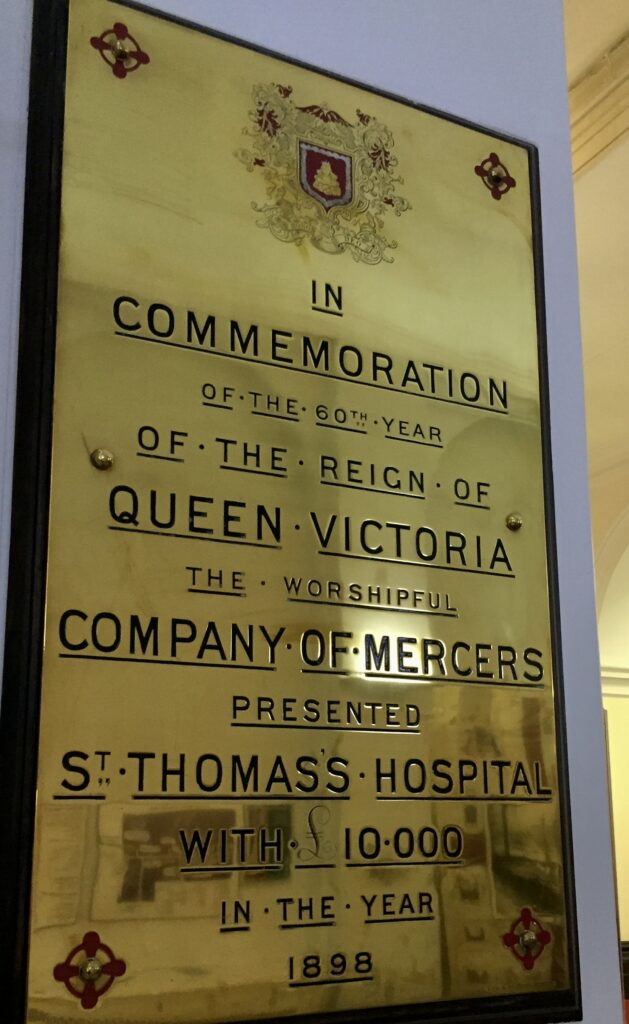
Truly Imperial (and maybe a bit imperious) …
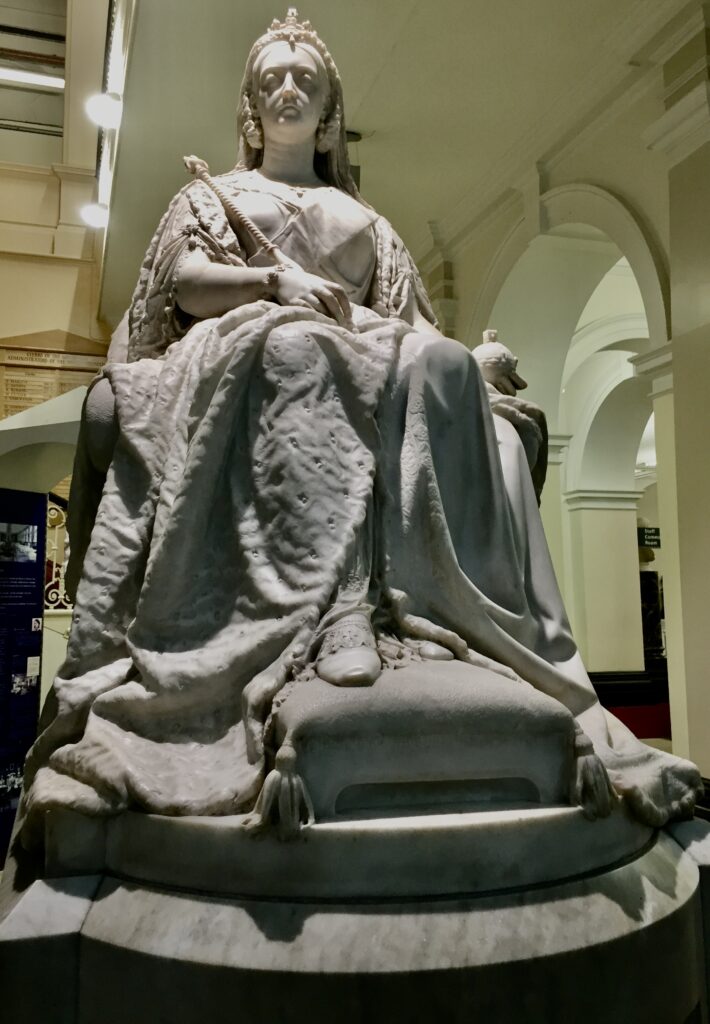
Edward VI was the son of Henry VIII and his third queen, Jane Seymour. Born on 12 October 1537, he succeed his father at the age of nine in 1547 but never attained his majority, dying aged 15 in 1553. During the Reformation St Thomas’, as a religious foundation, was deprived of its revenues and estates and was closed in 1540. In 1551, Edward granted a charter for the hospital’s refounding which is why he’s commemorated here …
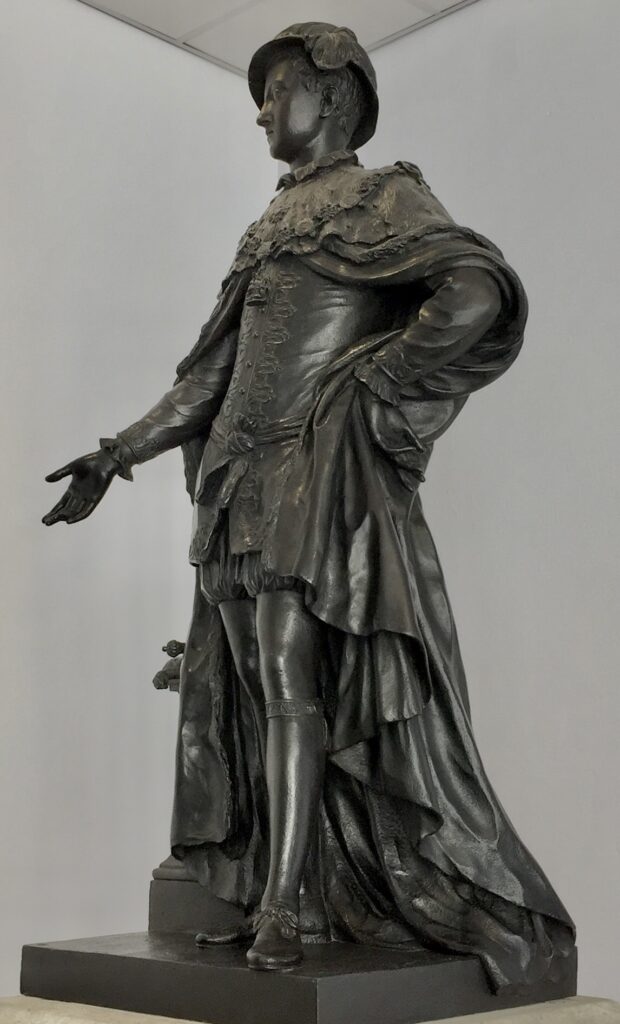
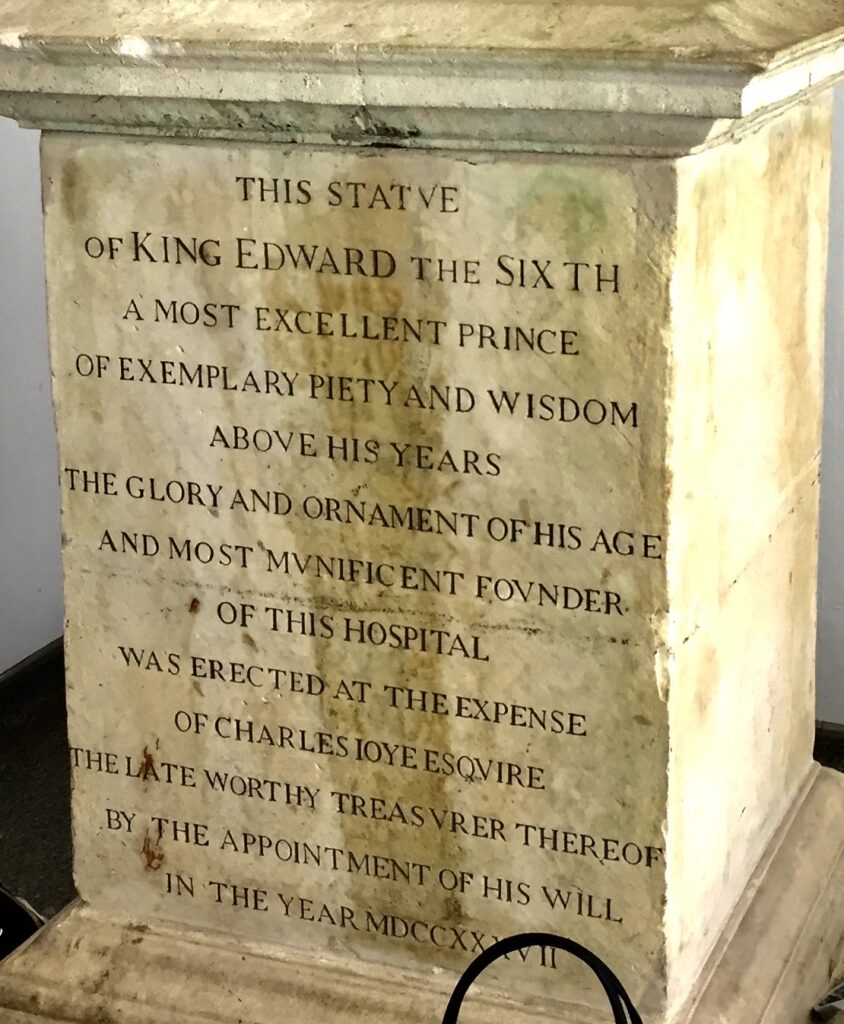
More beautiful stained glass on the way out …
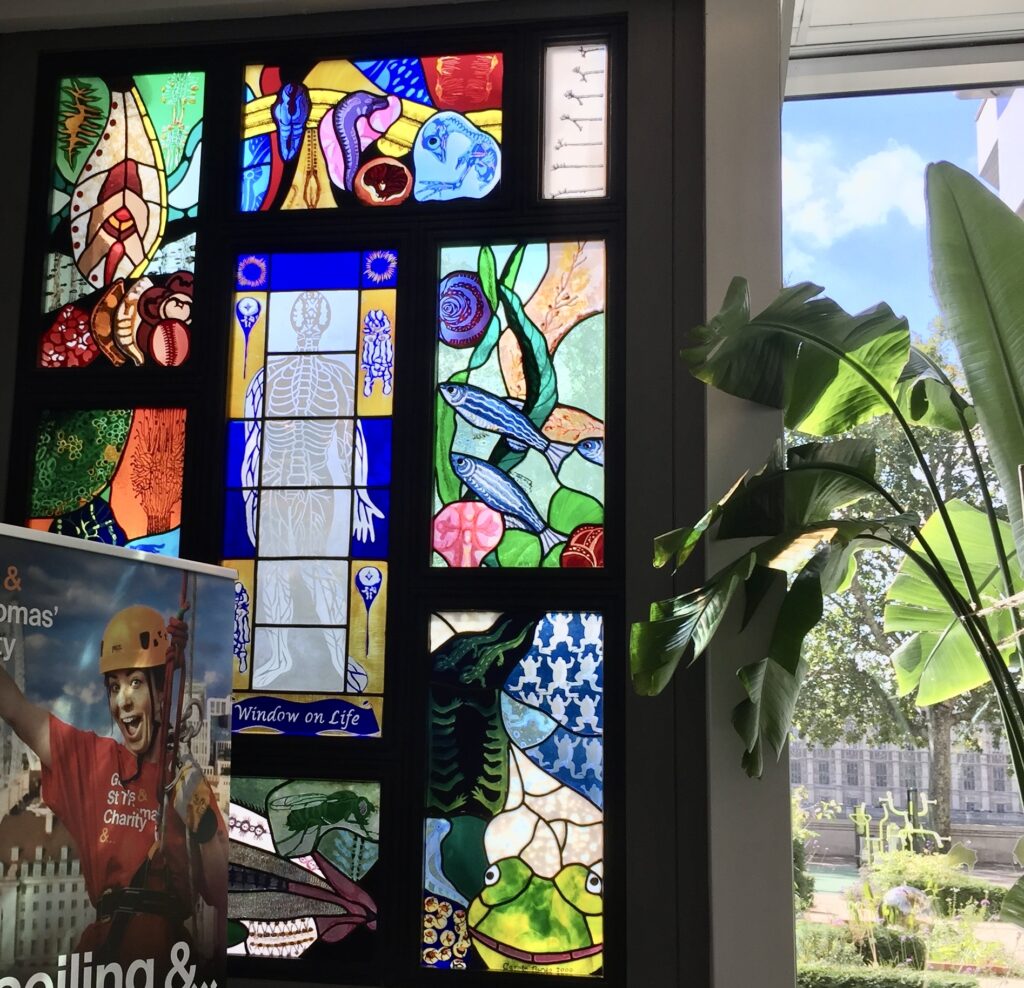
I love the frog …

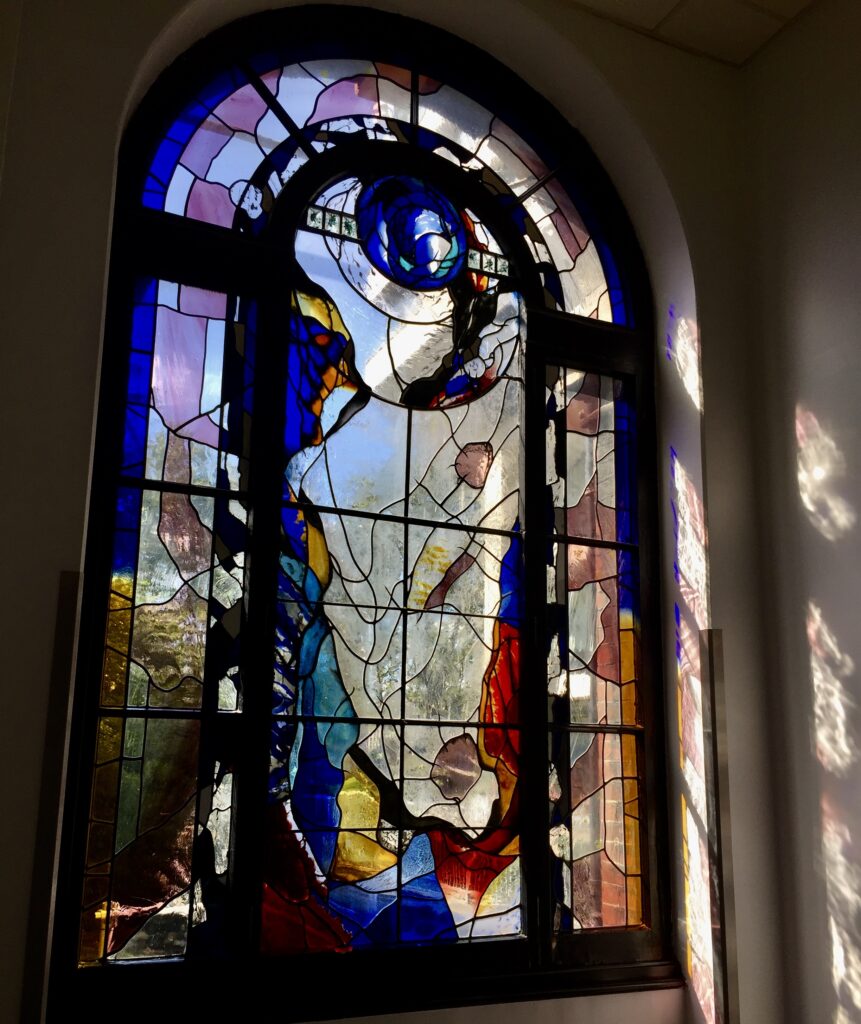
Outside the main entrance you’ll find this sculpture Cross the Divide by Rick Kirby (2000) …
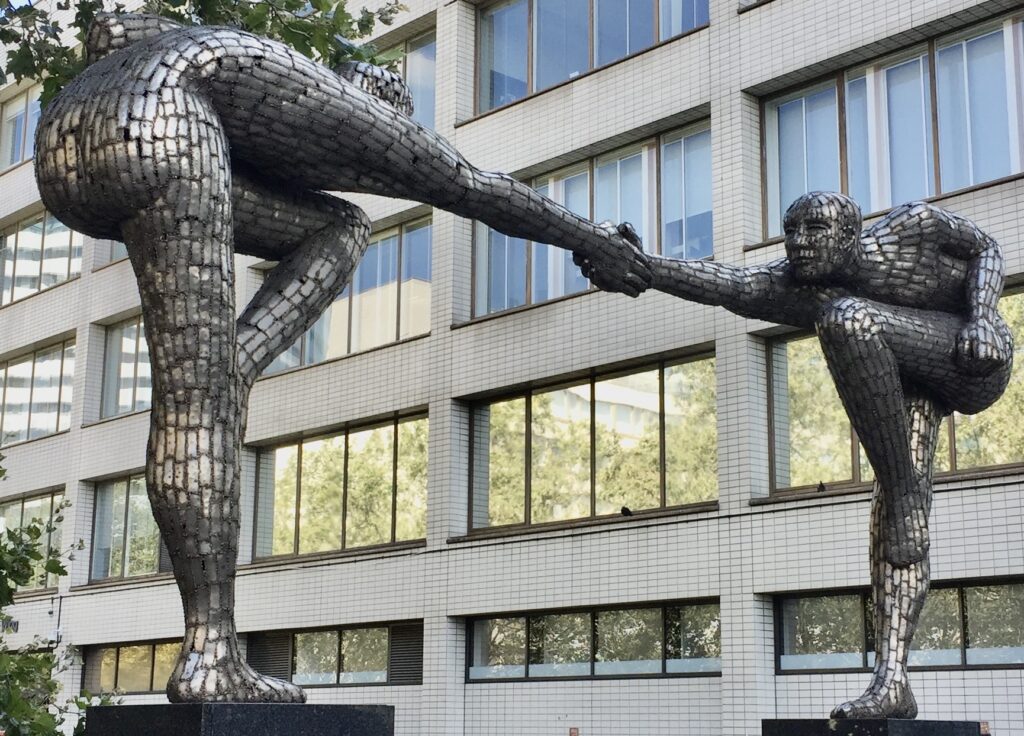
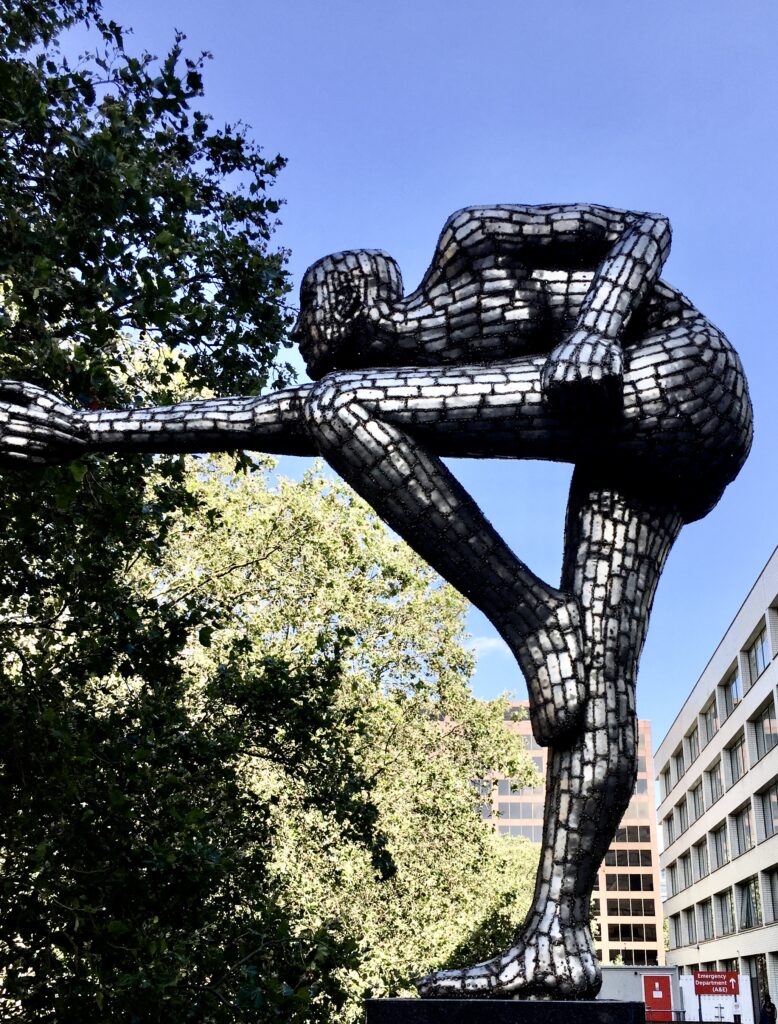
There’s also this striking sculpture of Mary Seacole …
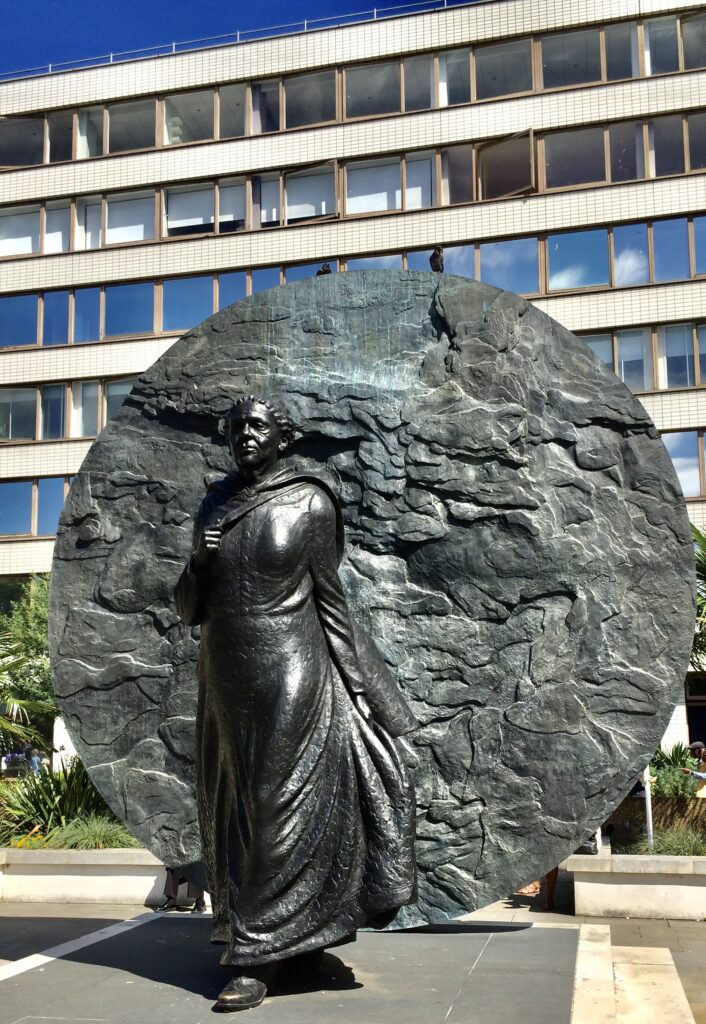
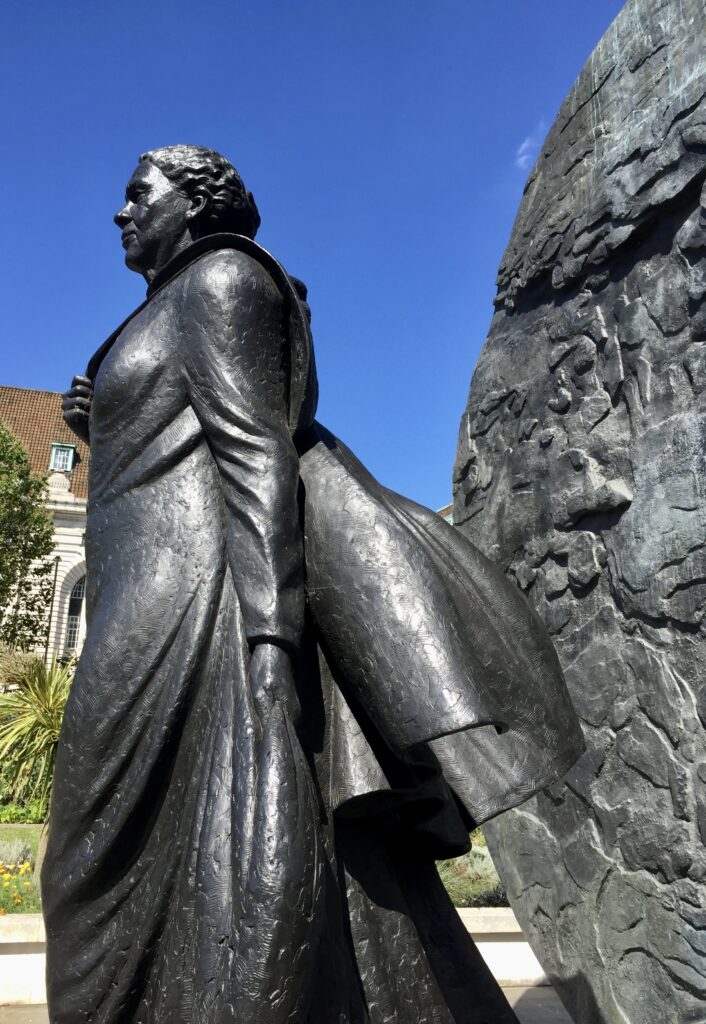
Read more about her extraordinary life here.
There are also nice views north towards the Houses of Parliament …
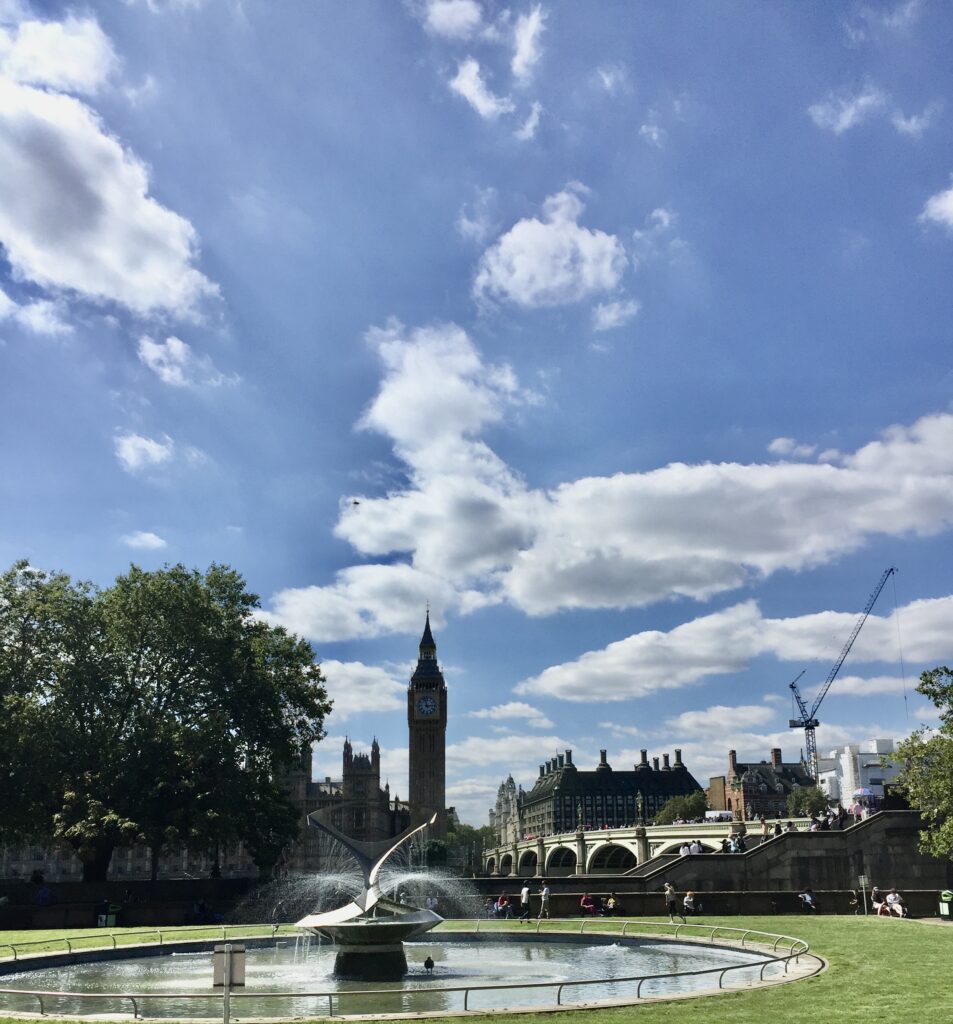
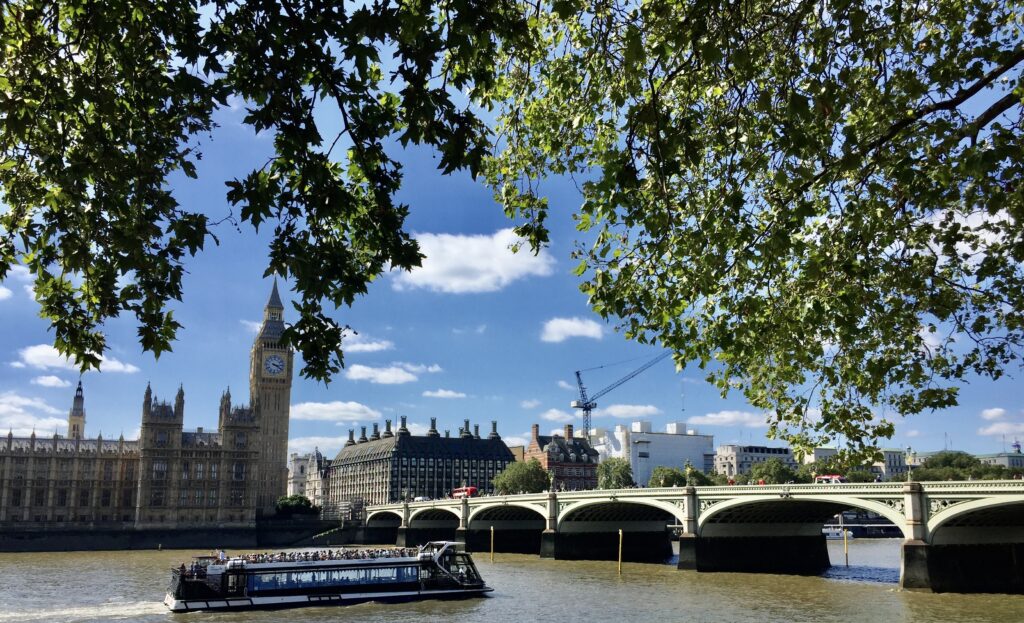
If you would like to follow me on Instagram here is the link …
